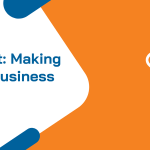
Let It Go to Let It Grow: Leading Through Delegation
In the early phases of business growth, the founder is often the heart, hands, and head of the operation. Every decision, every relationship, every challenge flows through them. But as a company grows—and especially as headcount climbs into the 20s and 30s—this heroic model becomes a bottleneck.
In the 7 Stages of Growth model, this inflection point is known as Stage 3. Here, the demands of the organization outpace the ability of one individual to carry them. No matter how brilliant, driven, or hardworking you are, growth demands something more than personal effort: it demands delegation. To let your business grow, you must be willing to let go.
The Delegation Dilemma
Letting go doesn’t mean surrendering control—it means shifting the way you manage it. Proper delegation is not about disappearing; it’s about designing a system where success doesn’t hinge on your direct involvement in every task.
Delegation is a leadership skill rooted in clarity, trust, and accountability. The challenge isn’t simply assigning tasks. It’s transitioning from a hands-on doer to a strategic enabler. It’s about leading through influence and infrastructure rather than personal execution.
Many leaders underestimate the extent to which this shift challenges their identity. After all, being indispensable can feel validating. But clinging to the center slows everyone down. Delegation demands a higher level of leadership maturity—the ability to empower others while steering the organization through systems, structure, and culture.
Recognizing the Signs You’re Overdue for Delegation
How do you know it’s time to make the leap from hero to leader? Look for these warning signs:
- You’re stuck approving every decision. If every choice, big or small, needs your input, your organization is constrained by your bandwidth.
- Team members are unclear about their authority. When roles and responsibilities are ambiguous, employees hesitate, momentum stalls, and mistakes multiply.
- You’re exhausted from constant context-switching. Jumping between strategic planning, client meetings, operations, and employee issues leaves you drained and scattered.
These symptoms indicate your company is still operating on Stage 2 systems, where the founder’s proximity fuels performance. However, Stage 3 demands evolution—building a business that thrives beyond the efforts of any single individual.
Balanced Leadership: Builder/Protector in Action
At Stage 3, leadership balance becomes critical. According to the 7 Stages of Growth model, the Builder/Protector Ratio at this stage is 1:1. Confidence and caution must exist in equal measure.
- Builders push innovation, risk-taking, and aggressive delegation. They focus on growth, opportunity, and moving fast.
- Protectors prioritize structure, risk management, and stability. They ensure the systems and safeguards are in place to sustain that growth.
Too much Builder energy can lead to organizational chaos, as the organization promises too much but delivers too little, leaving employees confused.
Too much Protector energy and momentum grind to a halt—opportunities are missed, and change is stifled.
Balanced leadership ensures that delegation occurs in a structured and sustainable manner, combining visionary risk-taking with operational rigor.
How to Delegate Without Disengaging
Delegation doesn’t mean checking out. It means elevating your role from tactical execution to strategic oversight. Here’s how to delegate effectively without losing visibility or impact:
1. Clarify Roles and Authority
Every team member must know what decisions they can make independently and when to escalate. Clear decision rights prevent bottlenecks and empower individuals to take action.
Tip: Create simple RACI charts (Responsible, Accountable, Consulted, Informed) for key projects to make expectations explicit and clear.
2. Coach, Don’t Command
Weekly one-on-ones should focus on problem-solving and growth, not just status updates. Shift from telling people what to do to asking questions that develop their judgment and leadership capacity.
Tip: Use a coaching framework, such as GROW (Goal, Reality, Options, Will), to structure your conversations.
3. Use Systems as Your Eyes and Ears
You don’t need to touch every detail if you design systems that surface insights. KPIs, dashboards, and process documentation allow you to track progress without micromanaging.
Tip: Focus your attention on leading indicators (metrics that predict future results) rather than obsessing over lagging ones.
Empowering Emerging Leaders
Delegation is also an investment in your future leadership team. As your company grows, you’ll need more than just task-doers—you’ll need decision-makers and culture carriers.
But not everyone who thrived in the startup hustle will scale into Stage 3 and beyond. That’s okay. The goal isn’t to retain everyone—it’s to build the team you need for the next stage.
Focus on:
- Hiring for Autonomy: Seek candidates who are self-directed, comfortable with ambiguity, and proactive about solving problems.
- Creating Leadership Development Plans: Invest in coaching, mentoring, and formal development paths to grow your internal talent pipeline.
- Aligning Decision Rights with Roles: Ensure your managers have the authority to lead within their spheres. Micromanaged managers become demotivated quickly.
When leaders at every level feel trusted and empowered, your organizational capacity expands exponentially.
Final Thought: You Can’t Grow Alone
Delegation is not about leading less. It’s about leading differently.
The more you delegate wisely, the more you create an organization that grows without requiring you to be everywhere at once. If done well, delegation fosters innovation, empowers people, builds internal leadership, and ultimately, multiplies your impact.
Your team grows. Your systems mature. Your vision comes to life because you dared to let go of the old way of operating.
Growth is a team sport. You can’t—and shouldn’t—grow alone.
How Apex GTS Advisors Can Help
At Apex GTS Advisors, we specialize in helping leadership teams at Stage 3 transition from founder-centric to enterprise-centric organizations. We work with you to refine your delegation systems, clarify authority structures, develop leadership pipelines, and realign your Builder/Protector dynamic for sustainable growth.
Suppose your organization is stuck in startup mode but ready for the next level. In that case, we are prepared to help you develop a leadership strategy that aligns operational maturity with ambitious growth objectives.
Contact us today to start building a business that thrives beyond you.





